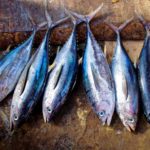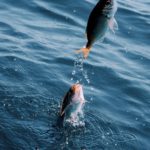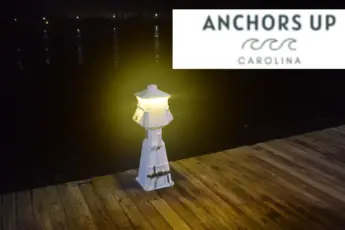A popular saltwater game fish in North Carolina, South Carolina, and Georgia is the cobia. The cobia is highly sought after because of both the aggressive battle they put up and the tasty fillets they yield. Anglers catch them in a variety of ways with stout tackle. The cobia fish is a unique species that is unlike many others.
How Do You Identify a Cobia
Many fishermen mistake the cobia for a shark. They are dark in color and shaped like a missile. The head of a cobia is flattened, and the mouth is without teeth. Younger cobia have a pronounced line stripe from the tail to the gills, but this tends to fade away as the fish ages.
How Big Do Cobia Grow
Cobia grows large in size. They are often found between twenty and fifty pounds but are common up to eighty pounds. However, they can exceed one hundred pounds.
Keep in mind that cobia are not only great battlers when hooked. Cobia will also fight to the death when gaffed and lying in the boat. Be sure to put the fish directly in the cooler or have a firm hold of it, or the large fish can cause significant damage to objects in the boat.
Where Can You Find Cobia
Cobia fish is found from New England down through South Florida in the waters off of the United States. Beyond the United States, cobia is also common off the shores of Japan, India, Australia, and Caribbean islands. Cobia are found widely across the world because they can tolerate a wide range of temperatures.
In What Habitat Do Cobia Live
These fish are highly migratory based on the temperature of the seas. They seek warm water throughout the southern regions in the winter and move north in the spring through the summer.
One of the unique things about the cobia habitat is that they are caught inland and offshore. They move about regularly. At times cobia hangs out on shallow flats or are in deep seas. Often they spend time around wrecks, artificial reefs, and navigational markers.
Something unique about the cobia is that they tend to follow mantas rays, sharks, and sea turtles especially when North Carolina cobia fishing. They are often found in the presence of these three other sea species.
Methods For Catching Cobia
Cobia are not only great fighters but tasty on the dinner table. It is essential to bring along stout gear and the right bait and lures to be sure you can land one to bring home.
Best Tackle To Catch Cobia
Kobe fish are known to be fighters who will draw out a tough battle. They tend to make long runs and then sit back and slowly resist. When it comes to cobia fishing tackle it is best to have thirty pound or greater test line and medium-heavy rods because of the fish’s strength and weight to avoid breaking them off.
Best Lures And Bait For Catching Cobia
Many people ask, what do cobia eat? When it comes to catching cobia, they eat a wide variety of baits and lures. The most preferred live baits include mullet, grunts, jacks, menhaden, cigar minnows, and pinfish. All of these are great choices to maximize success when fishing.
For the angler who doesn’t prefer live bait, jigs ranging between ½ ounce and 2 ounces are ideal. For the fly fisherman, tie on a large streamer fly and move it quickly in front of the fish.
Cobia Fishing Tips
One of the best cobia fishing tips is to control the fish once it enters the boat. Cobia causes damage to vessels because of their strength when left to flop about on the deck. To avoid damage, gaff the fish and place it directly into the cooler.
How Good Are Cobia To Eat
You should never wonder are cobia good to eat, cobia fillets are excellent when properly prepared. The fillets are white in color and flaky in texture. As far as taste is concerned, it is mild and sweet.
Cobia fillets are versatile; they can be cooked on the grill, broiled, sauteed, fried, and more. Simply add your favorite seasonings and avoid overcooking. You will quickly realize the question can you eat cobia is silly because the tasty white fillets are top notch.
Is It Worth Fishing For Cobia Fish
The best thing about targeting cobia is that you don’t need an offshore vessel to catch these highly migrational species. They are just as likely to be encountered inshore as they are offshore. Anglers who are seeking redfish, flounder, and convict fish bump into keeper-sized cobia. Pick up the best bait for cobia before fishing. The battle and taste make the cobia well worth targeting. On your next trip, target cobia.







Leave a Comment
You must be logged in to post a comment.